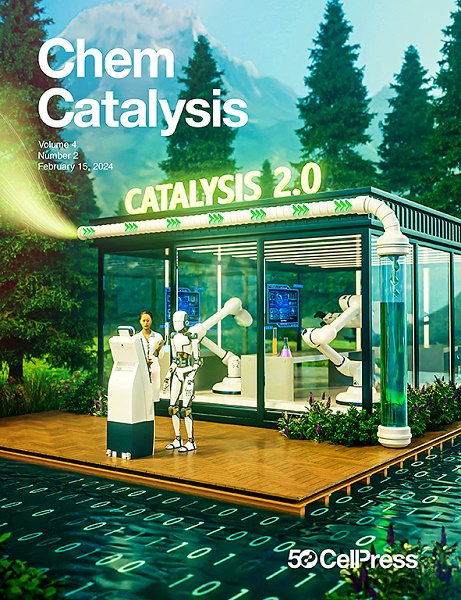Direct ammonia protonic ceramic fuel cells through heterogeneous interfaces engineering
IF 11.5
Q1 CHEMISTRY, PHYSICAL
引用次数: 0
Abstract
Ammonia, as an ideal carbon-free hydrogen carrier, enables direct application in protonic ceramic fuel cells while bypassing energy-intensive hydrogen regeneration. However, conventional Ni-based anodes for direct ammonia protonic ceramic fuel cells (DA-PCFCs) suffer from weak interfacial coupling and structural instability. Herein, we report a strategy of anodic heterogeneous engineering to build a strongly coupled Ni-BaZr0.1Ce0.7Y0.1Yb0.1O3-δ interface combined with a Cs2O-decorated Ru catalyst for surface modification. This design enhances ammonia decomposition by providing a highly interconnected network that facilitates efficient proton conduction and electron transfer, while the Ru catalyst introduces abundant active sites with superior ammonia adsorption capacity. The cell delivers a peak power density of 1.01 W cm−2 at 650°C and maintains 98.1% of its initial ammonia decomposition activity after 200 h at 500°C of operation. By overcoming the bottlenecks of DA-PCFCs, this study paves the way for their practical application in carbon-neutral energy systems.

基于异质界面工程的直接氨质子陶瓷燃料电池
氨作为一种理想的无碳氢载体,可以直接应用于质子陶瓷燃料电池,而无需进行高能耗的氢再生。然而,用于直接氨质子陶瓷燃料电池(da - pcfc)的传统镍基阳极存在界面耦合弱和结构不稳定的问题。在此,我们报道了一种阳极非均相工程策略,建立了一个强耦合Ni-BaZr0.1Ce0.7Y0.1Yb0.1O3-δ界面,并结合cs20修饰的Ru催化剂进行表面改性。这种设计通过提供一个高度互联的网络来促进高效的质子传导和电子转移,而Ru催化剂引入了丰富的活性位点,具有优越的氨吸附能力,从而增强了氨的分解。该电池在650℃下的峰值功率密度为1.01 W cm−2,在500℃下运行200 h后仍保持98.1%的初始氨分解活性。通过克服da - pcfc的瓶颈,本研究为其在碳中和能源系统中的实际应用铺平了道路。
本文章由计算机程序翻译,如有差异,请以英文原文为准。
求助全文
约1分钟内获得全文
求助全文
来源期刊
CiteScore
10.50
自引率
6.40%
发文量
0
期刊介绍:
Chem Catalysis is a monthly journal that publishes innovative research on fundamental and applied catalysis, providing a platform for researchers across chemistry, chemical engineering, and related fields. It serves as a premier resource for scientists and engineers in academia and industry, covering heterogeneous, homogeneous, and biocatalysis. Emphasizing transformative methods and technologies, the journal aims to advance understanding, introduce novel catalysts, and connect fundamental insights to real-world applications for societal benefit.

 求助内容:
求助内容: 应助结果提醒方式:
应助结果提醒方式:


